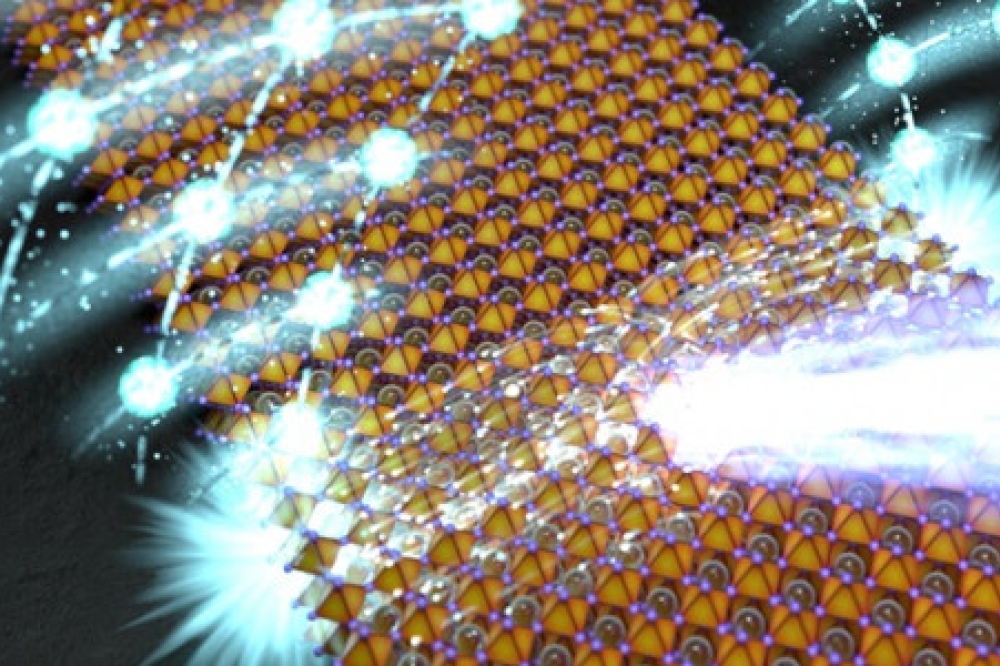Perovskite waveguides for nonlinear photonics

The researchers say this work could advance the use of PICs operating at room temperature together with nonlinear optical effects, which could, in turn, revolutionise both classical and quantum signal processing
Scientists from the University of Warsaw’s Faculty of Physics, in collaboration with other researchers from Poland as well as Italy, Iceland, and Australia, have reported creating perovskite crystals with predefined shapes that can serve in nonlinear photonics as waveguides, couplers, splitters, and modulators. The research results have been published in the journal Nature Materials.
Integrated photonic circuits operating at room temperature combined with optical nonlinear effects could revolutionise both classical and quantum signal processing. As well as describing the fabrication of these structures, the new study reports on the edge lasing effect, which the researchers say is associated with the formation of the condensate of exciton-polaritons – quasiparticles behaving partly like light and partly like matter.
“Perovskites exhibit great versatility: from polycrystalline layers, nano- and micro-crystals to bulk crystals,” says Barbara Piętka from the Faculty of Physics, University of Warsaw, who was one of the researchers who initiated the project. “They can be used in various applications, from solar cells to lasers. Some, such as the CsPbBr3 (caesium-lead-bromide) material we used, are also ideal semiconductors for optical applications due to their high exciton binding energy and oscillator strength. These effects allow for enhanced light interactions, significantly lowering the energy required for nonlinear light amplification.”
Perovskite crystals
The researchers applied repeatable and scalable synthesis methods to obtain perovskite crystals with precisely defined dimensions and shapes. They used a microfluidic approach, where crystals are grown from a solution in narrow polymer molds that can be imprinted with any shape from a template. A key element was controlling the solution concentration and growth temperatures while maintaining an atmosphere of saturated solvent vapours. According to the scientists, this approach, combined with the use of nearly atomically smooth gallium arsenide templates made using electron-beam lithography and plasma etching at the Łukasiewicz Research Network – Institute of Microelectronics and Photonics under Anna Szerling’s leadership, produced high-quality single crystals.
In this way, CsPbBr3 crystals can be formed into any shape with simple corners to smooth curves, which the team say is a true achievement in the world of crystalline materials, adding that they can be fabricated on any substrate, enhancing their compatibility with existing photonic devices.
“These crystals, due to their high quality, form Fabry-Pérot type resonators on their walls, allowing strong nonlinear effects to be observed without the need for external Bragg mirrors,” explains Matuesz Kędziora, a doctoral candidate at the Faculty of Physics and the first author of the paper.
The researchers emphasise that perovskites could play a key role in the further development of optical technologies. The discoveries of physicists from UW could significantly increase the chances of using perovskite crystals in nonlinear photonics operating at room temperature. Moreover, the structures developed may be compatible with silicon technology, further enhancing their commercialisation potential.
Image credit: Dr. Mateusz Król University of Warsaw and the School of Physics at the Australian National University in Canberra



































